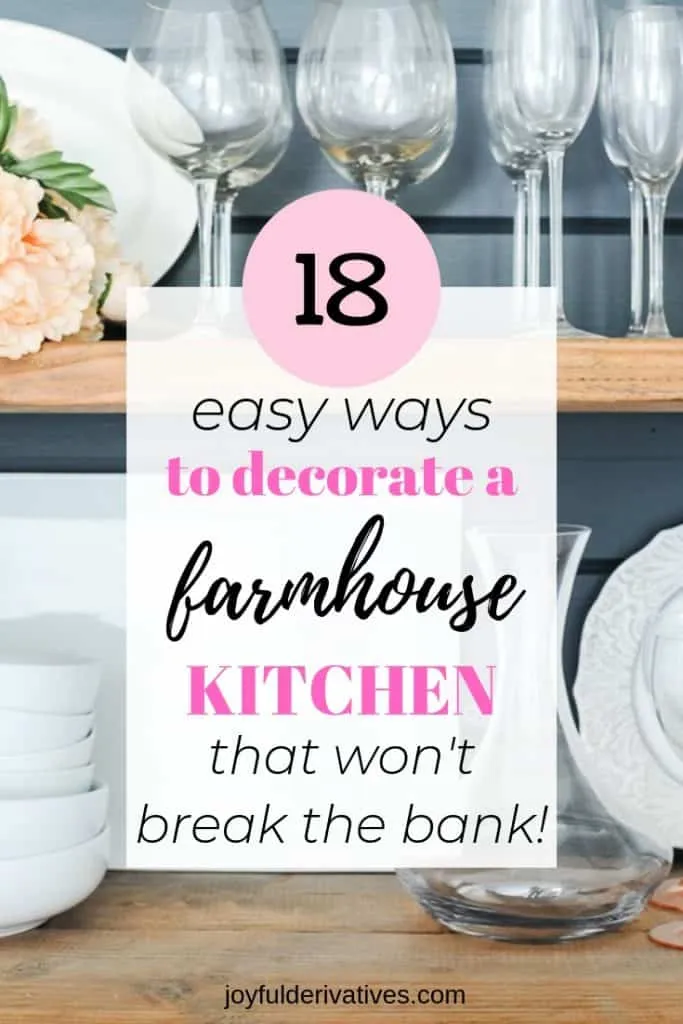Farmhouse Kitchen Decor Mistakes: Top 5 to Avoid
The farmhouse kitchen style continues to captivate with its rustic charm and inviting atmosphere. But achieving that perfect blend of comfort and style is trickier than it looks. Many homeowners fall into common traps that detract from the desired aesthetic. This guide explores the top five farmhouse kitchen decor mistakes, helping you create a space that is both beautiful and functional. By avoiding these pitfalls, you can ensure your kitchen reflects the warm, welcoming essence of farmhouse design. Let’s dive into the most common mistakes and learn how to correct them, ensuring your kitchen is a true farmhouse haven. Remember, creating a beautiful kitchen is about embracing simplicity, functionality, and a touch of personality. Avoid these mistakes, and your farmhouse kitchen will be a success.
1. Overdoing the Shiplap
Shiplap, with its horizontal wooden planks, has become synonymous with farmhouse style. However, using too much shiplap can overwhelm a space, making it feel more like a trendy design experiment than a cozy kitchen. While a shiplap accent wall can add character, covering all the walls or the ceiling can create a visually busy and sometimes claustrophobic environment. Balance is key. Consider shiplap as an accent, not the main feature. This allows other elements of the kitchen to shine, creating a more balanced and inviting space. Using shiplap sparingly allows the textures and details to stand out rather than blend into a sea of horizontal lines. This is one of the most common farmhouse kitchen decor mistakes to watch out for.
The Problem with Too Much Shiplap

Excessive shiplap can lead to a space that feels cold and impersonal, rather than the warm, lived-in feel that farmhouse style aims to achieve. The visual busyness also detracts from other design elements, such as cabinetry, lighting, and décor. Too much shiplap can make a kitchen feel like a design trend rather than a timeless space. The goal is to create a kitchen that feels welcoming and personalized, so remember to use shiplap strategically to enhance the overall design without overpowering it. The overuse of shiplap also limits the opportunity to incorporate other textures and materials that add depth and interest to the space. Thus, it is an essential farmhouse kitchen decor mistake to avoid.
Alternatives to Shiplap
If you love the look of shiplap but want to avoid overdoing it, consider alternatives. Beadboard, with its vertical grooves, offers a similar rustic charm without the same visual intensity. Another option is using textured wallpaper or paint to mimic the look of wood paneling, providing a subtle textural element. Combining different materials such as painted drywall with wood accents, or incorporating reclaimed wood in strategic areas, can also create visual interest while maintaining a farmhouse aesthetic. Focus on natural elements, and don’t feel like you have to fill every inch with one material. Incorporate stone, brick, or even patterned tiles to provide contrast and prevent the space from feeling monotonous.
2. Ignoring Functionality
Farmhouse kitchens are often celebrated for their beauty, but it’s essential not to let aesthetics overshadow functionality. A beautiful kitchen that’s impractical can quickly become a source of frustration. Prioritizing form over function leads to poor storage solutions, inefficient workspaces, and a kitchen that doesn’t serve your daily needs. It’s crucial to balance the rustic charm of farmhouse style with practical design elements. Consider the flow of your kitchen, the placement of appliances, and the availability of storage space. A well-designed kitchen should make cooking and meal preparation a pleasure, not a chore. Think about how you use your kitchen daily and incorporate elements that support those activities. This is among the most overlooked farmhouse kitchen decor mistakes.
Prioritizing Aesthetics Over Practicality
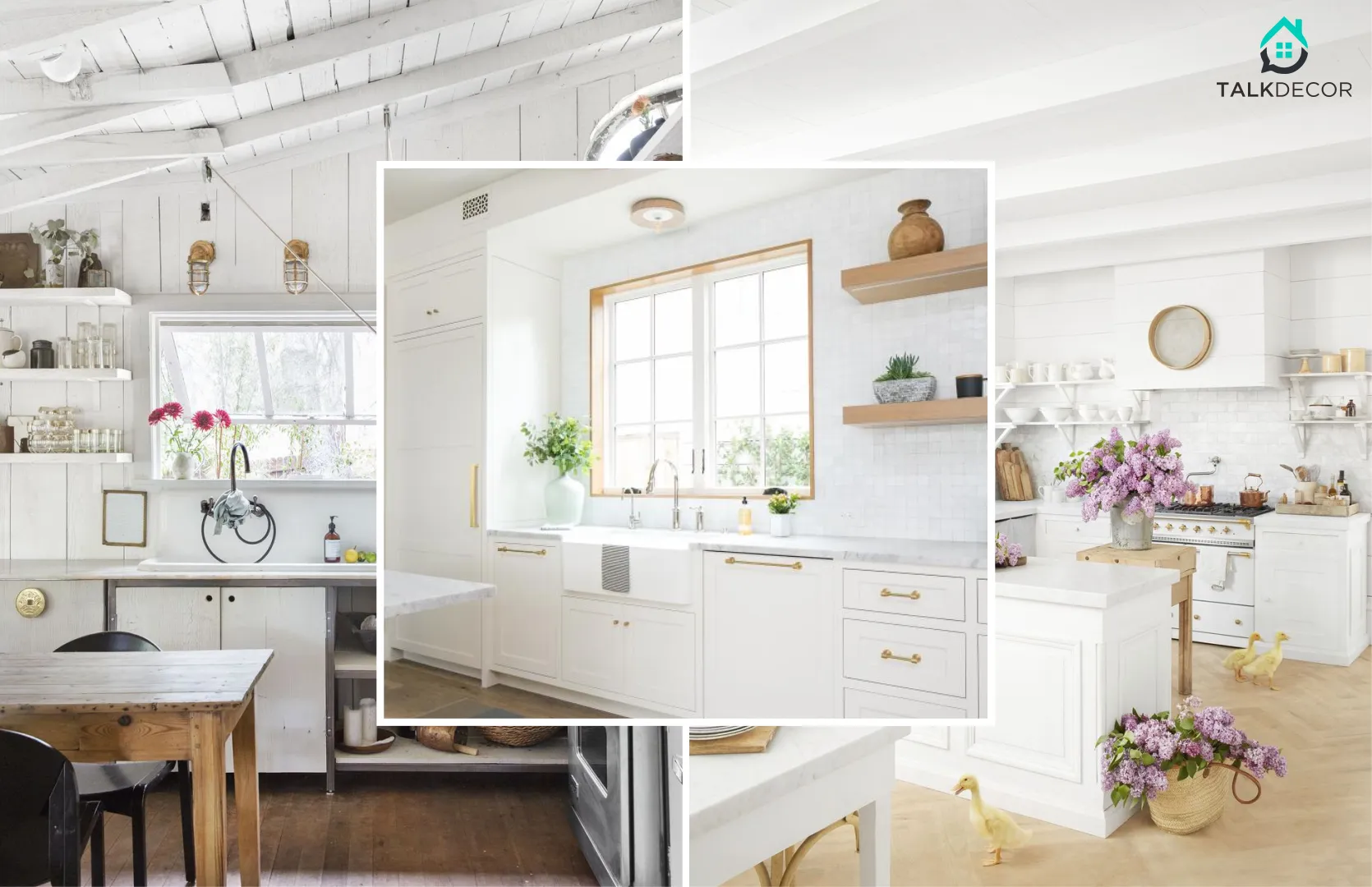
Choosing open shelving over closed cabinets, for example, might look great but can lead to cluttered counters if you don’t have the discipline to keep things organized. Similarly, opting for a large farmhouse sink without considering the available counter space can be inconvenient. Avoid placing aesthetics above the fundamental functionality of the space. Think about how you live and cook. Ignoring these practical aspects will ultimately undermine the usability of your kitchen. Beautiful kitchens should also be practical, so the most important farmhouse kitchen decor mistakes to avoid are those that prevent you from doing what you need to do in the kitchen.
How to Balance Beauty and Function
Achieving the right balance involves careful planning. Start by assessing your needs. What tasks do you perform in your kitchen regularly? What storage solutions do you need? Incorporate practical elements like pull-out drawers for pots and pans, a well-organized pantry, and sufficient counter space for food preparation. When choosing materials and finishes, opt for durable, easy-to-clean options. Choose appliances that are efficient and fit your cooking style. Consider the placement of your appliances and the flow of your kitchen. Ensure that your design accommodates your lifestyle and habits. The goal is to create a space that is both beautiful and efficient, making your kitchen a joy to use.
3. Cluttering the Counters
Farmhouse kitchens should feel warm and inviting, but cluttered counters can quickly make the space feel chaotic and overwhelming. While it’s tempting to display all your favorite decor items, excessive clutter detracts from the overall aesthetic and makes the kitchen feel smaller and less functional. The goal is to create a clean, uncluttered space that allows you to move freely and enjoy the beauty of your kitchen. A cluttered kitchen can also be difficult to keep clean. Excess items on the counters collect dust and grime, making cleaning a more tedious task. Focus on curating your decor and keeping only essential items on display. Minimizing clutter creates a more relaxing and enjoyable cooking and living experience. Another major of farmhouse kitchen decor mistakes.
The Downside of Excessive Decor
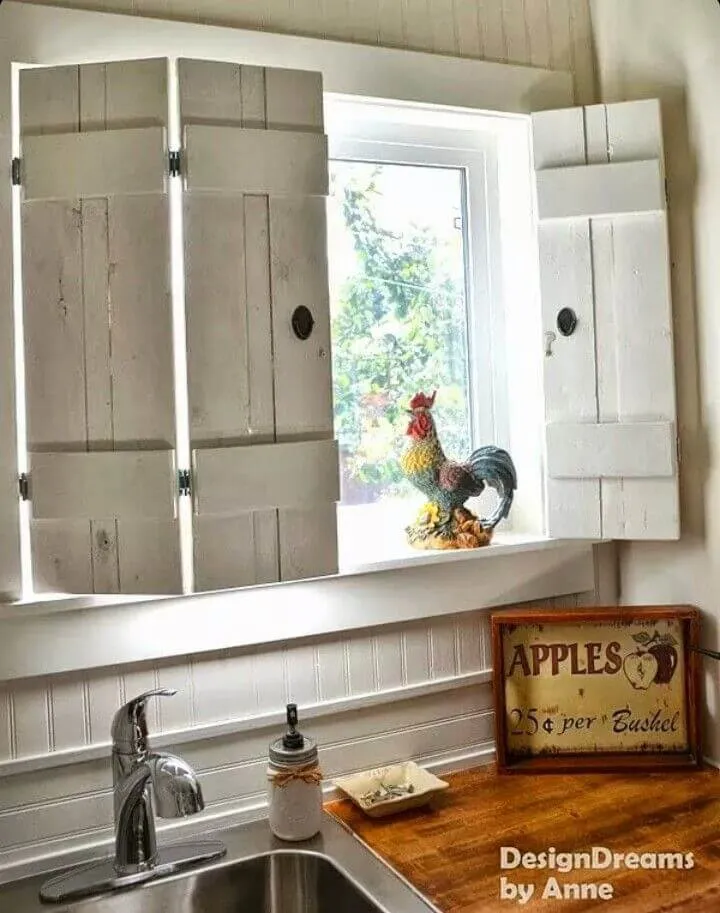
Too much decor can make a kitchen feel cramped and visually overwhelming. Every item on the counter competes for attention, detracting from the beauty of the kitchen’s core elements. Excessive decor also makes it harder to find the items you need when cooking or preparing meals. Clutter also limits usable workspace. A clear counter provides space for food preparation, appliance usage, and general kitchen tasks. While decorative items are important, a cluttered counter also hinders the overall feeling of a farmhouse kitchen’s warmth and comfort. So, keep the display to the essentials.
Tips for a Clutter-Free Kitchen
Start by decluttering your countertops. Remove anything that isn’t essential or used daily. Invest in storage solutions like drawers, cabinets, and pantry organizers. Keep everyday items easily accessible but out of sight. Store small appliances in cabinets when not in use. Use decorative jars and containers for items like utensils and dry goods. Consider a designated area for cookbooks, spices, and other frequently used items. Regularly assess your counter space and remove any unnecessary items. By creating a system and sticking to it, you can maintain a clean, clutter-free kitchen that reflects the warm, inviting spirit of the farmhouse style.
4. Choosing the Wrong Lighting
Lighting plays a crucial role in the ambiance of a farmhouse kitchen. Poorly chosen lighting can make a space feel cold, harsh, or uninviting. The goal is to create a warm, welcoming atmosphere that highlights the kitchen’s features. Choosing the right lighting is essential for both functionality and aesthetics. The right lighting can also dramatically impact the overall style. Avoid using fluorescent lights or harsh overhead fixtures. These can cast unflattering shadows and detract from the cozy farmhouse aesthetic. Instead, focus on layering your lighting to create a balanced and inviting atmosphere. By avoiding common lighting pitfalls, you can create a kitchen that is both beautiful and functional.
Impact of Lighting on the Farmhouse Aesthetic
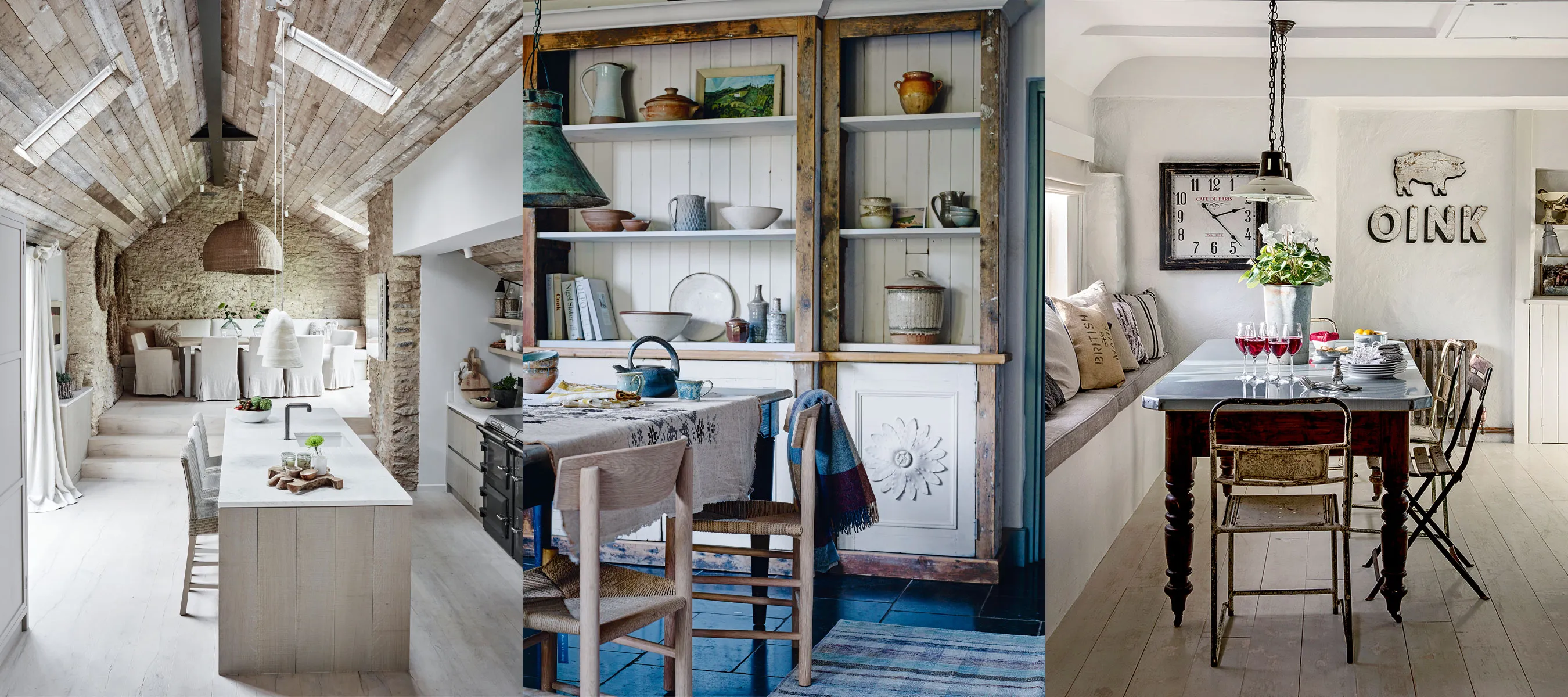
Lighting significantly impacts the mood and functionality of any kitchen. Warm, inviting lighting enhances the feeling of comfort and coziness. Consider the different layers of light: ambient, task, and accent. Ambient lighting provides general illumination, task lighting focuses on specific work areas, and accent lighting highlights decorative elements. The right balance between these layers is crucial for achieving the farmhouse aesthetic. In a farmhouse kitchen, lighting should enhance the natural textures and materials. It should also create a warm, inviting atmosphere that complements the rustic charm of the space. Proper lighting can highlight your kitchen’s best features.
Best Lighting Choices for Farmhouse Kitchens
Embrace a variety of lighting options to create a balanced and inviting atmosphere. Consider using pendant lights over the island or the sink for task lighting. Install under-cabinet lights to illuminate countertops and provide additional task lighting. Choose fixtures with warm-toned bulbs to create a cozy feel. Avoid harsh, direct lighting. Instead, opt for fixtures that diffuse the light, such as those with shades or frosted glass. Consider incorporating dimmer switches to control the intensity of the light and adjust the mood. Choose fixtures with a vintage or rustic appeal. The best choices often include chandeliers, mason jar lights, or fixtures with exposed Edison bulbs. Lighting also needs to have adequate lighting for all cooking needs.
5. Forgetting the ‘Cozy’ Factor
The essence of farmhouse style lies in its warmth, comfort, and inviting atmosphere. Neglecting this ‘cozy’ factor is one of the most common farmhouse kitchen decor mistakes. A farmhouse kitchen should feel lived-in and welcoming, not stark or sterile. The kitchen should be a place where family and friends gather. A kitchen should also be somewhere you look forward to spending time. So, be sure to create a space that embraces warmth, comfort, and personality. Ensure you’re adding details that make it feel like a place to spend time and create memories. By adding the right elements, you can create a kitchen that feels like the heart of the home.
The Importance of Warmth and Comfort
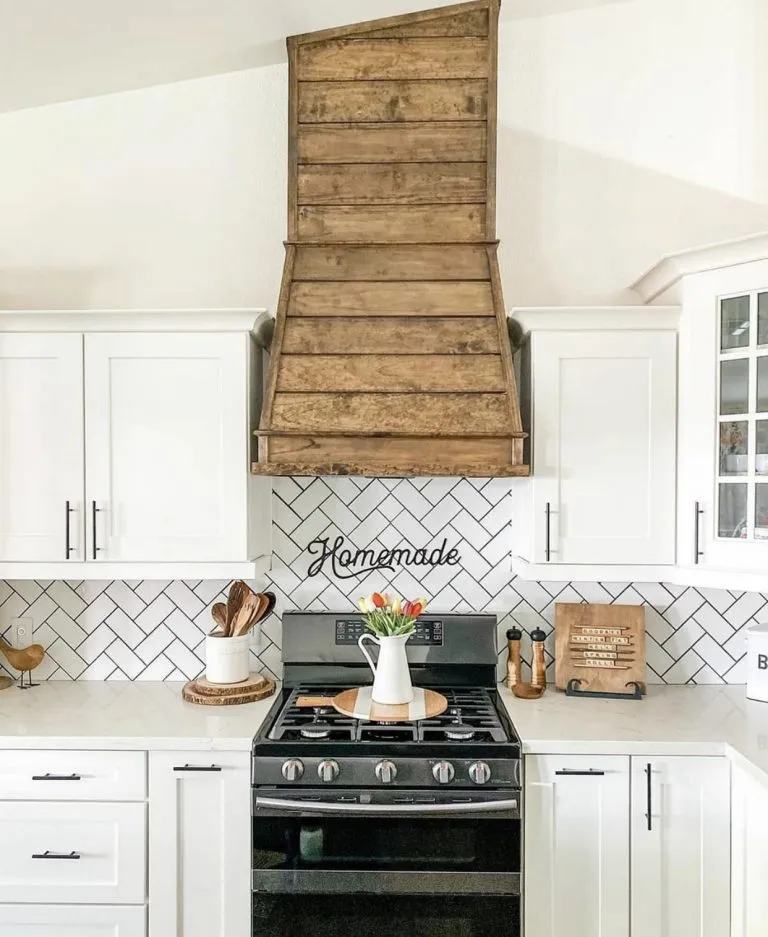
Warmth and comfort are the defining features of a true farmhouse kitchen. It’s about creating a space that feels lived-in, inviting, and personalized. This means incorporating elements that evoke a sense of nostalgia, such as vintage accents, handmade items, and family heirlooms. It’s about creating a space where family and friends can gather comfortably. Add touches that showcase your personality and create a space that reflects your unique style. The goal is to create a kitchen that feels like a warm embrace, a place where memories are made and cherished. To do this, the kitchen must feel comfortable and inviting.
Adding Cozy Elements to Your Kitchen
Introduce cozy elements to your kitchen. Use textiles like soft rugs, plush cushions, and warm curtains to add texture and warmth. Incorporate natural materials such as wood, stone, and greenery to create a connection to nature. Display personal items that reflect your personality and style. Add vintage or antique accents. A well-chosen collection of vintage bowls or a rustic wooden cutting board can add character and charm. Use warm, inviting colors, and textures throughout your kitchen. Layer in a variety of textures, such as wood, metal, and fabric. By focusing on warmth, comfort, and personality, you can ensure that your farmhouse kitchen feels like the heart of your home.
